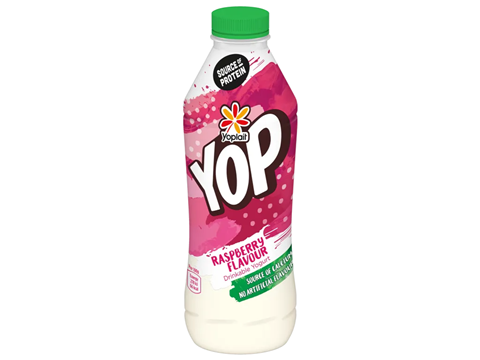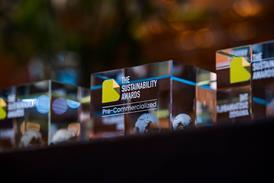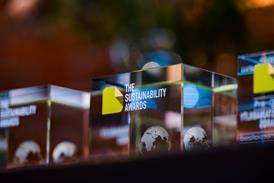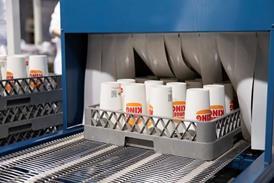
Yoplait has rolled out a clear, 35% recycled PET bottle with an attached cap and micro-perforated sleeve for its Yop yoghurt drink – a redesign intended for easy recycling in line with the brand’s target of 100% recyclability by the end of 2025.
The product’s 500g and 825g formats will now be sold in a clear PET bottle containing 50% rPET. In line with the EU’s Single-Use Plastics Directive, it features an attached cap.
Additionally, its micro-perforated sleeve is printed with instructions to guide the consumer through its removal before the packaging is thrown into the recycling bin. These features are set to facilitate easy sorting and recycling, thus keeping litter out of the environment.
Antoine Hours, general manager at Yoplait UK, explains: “Our ambition is for all of our packaging to be recyclable by the end of 2025 and the move to PET and inclusion of rPET in our Yop bottles this year and the move to PET for our Petits Filous, Wildlife, Peppa Pig and Paw Patrol pots last year has seen us take a huge step towards this ambition.
“We are confident that we can move towards being a more circular brand as technologies and infrastructures become more sophisticated.”
Also featured on the new label is the new Yoplait logo and additional information about Yop’s status as a yoghurt drink rather than a flavoured milk.
Earlier this year, INEOS Styrolution developed its “super clean” purification process, which was previously limited to PET bottle recyclates, to mechanically recycle polystyrene into yoghurt cups. The resultant packaging is thought to offer a ‘significantly lower’ environmental footprint while matching the physical properties of conventionally produced polystyrene alternatives.
DePoly and Plastic Technologies Inc. also revealed their ‘closed-loop’ recycled PET bottle – produced by sourcing ‘virgin-grade’ PTA monomers from a mixed PET and polyester stream, rebuilding them into PET pellets, and manufacturing bottles via stretch blow moulding. These are believed to meet the migration requirements for food-contact PET in long-term storage at room temperature and below, including hot fill.
In another article, we dove deeper into attached caps, examining their poor reputation among consumers and exploring ideas to improve their design in the future.
If you liked this story, you might also enjoy:
Reuse vs. single use – which is better for the environment?
Sustainable Innovation Report 2025: Current trends and future priorities
What can the world learn from South Korea’s world-leading performance in plastics circularity?











No comments yet